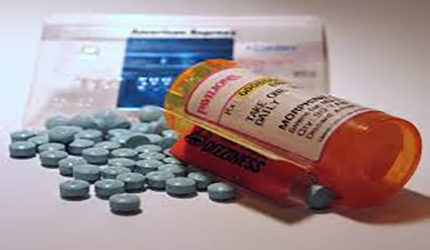
FDA Seeks Feedback on Expanded Use of Naloxone Opioid Overdose Antidote
The FDA is considering expanding access to naloxone to cut down on deaths from opioid overdoses and wants industry and others to weigh in on the clinical, legal and regulatory barriers to doing so.
These include having drugmakers submit applications to the agency to change the drug’s status from prescription-only to either over-the-counter or available from a pharmacist, which would require submitting additional data. Naloxone’s labeling would also need to be changed.
A public meeting has been set for July 1-2 at the agency’s White Oak, Md., campus to discuss these and other issues, as well as which populations are most at risk for overdosing on legal and illicit forms of the pain relievers.
Naloxone is currently available in the U.S. by prescription only. However, since 2001, 34 states and the District of Columbia have passed laws allowing physicians to prescribe the drug to family and friends of people at risk of overdose, says Daniel Raymond, the policy director of the National Harm Reduction Coalition.
He hopes the FDA will discuss the possibility of making the drug available without a prescription to family members and friends of addicts, as well as first responders and law enforcement officers. Several states — including Rhode Island, Massachusetts and California — are already doing this through a collaborative pathways agreement, whereby people wishing to obtain naloxone have to approach a pharmacist and request it.
Both prescriptions for opioids and deaths from overdoses have been increasing in recent years, the FDA says.
Between 2009 and 2012, the number of prescriptions for opioids increased by 3 million. The following year, there were 24,492 deaths from overdose.
This isn’t the first meeting the FDA has held on naloxone. At a meeting in April 2012, stakeholders generally agreed that the drug should be more widely available. And last November, the World Health Organization called on the U.S. to increase access to naloxone, saying more than 20,000 deaths a year might be prevented.
Raymond also hopes insurers will begin to cover the drug, which can be expensive. Intramuscular naloxone costs about $15 per dose, while the intranasal formulation costs about $40 per dose — and the autoinjector costs several hundred dollars. Each drug overdose requires two doses, in case the first isn’t enough to keep the person alive until medical help arrives.
Amphastar Pharmaceuticals is the only U.S. supplier of intranasal naloxone.
The agency is taking comments on the topic at docket no. FDA-2011-N-0802 through Sept. 1. Read the Federal Register notice at www.fdanews.com/05-18-15-overdose.pdf. — Lena Freund
